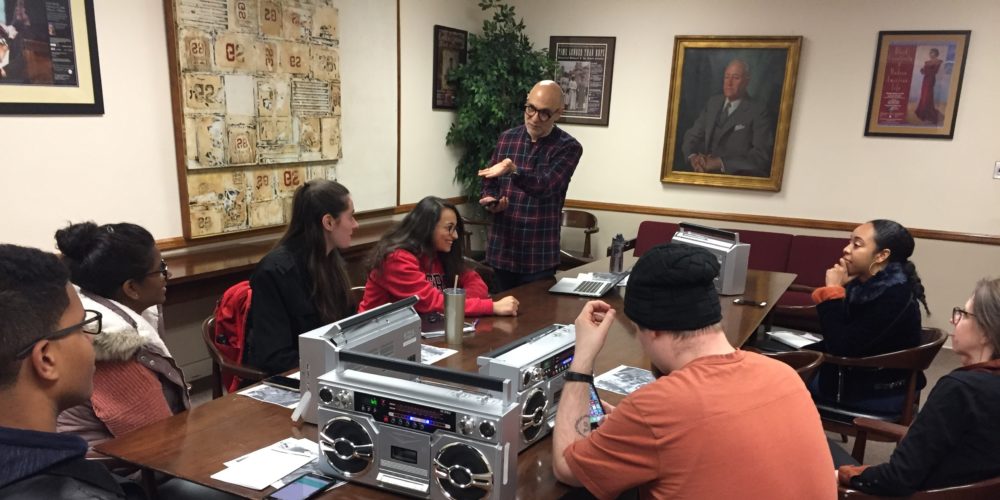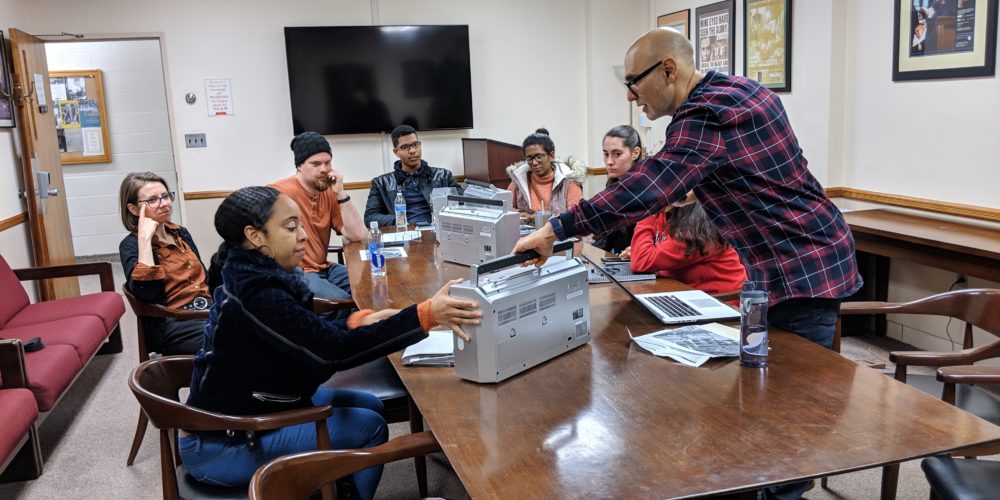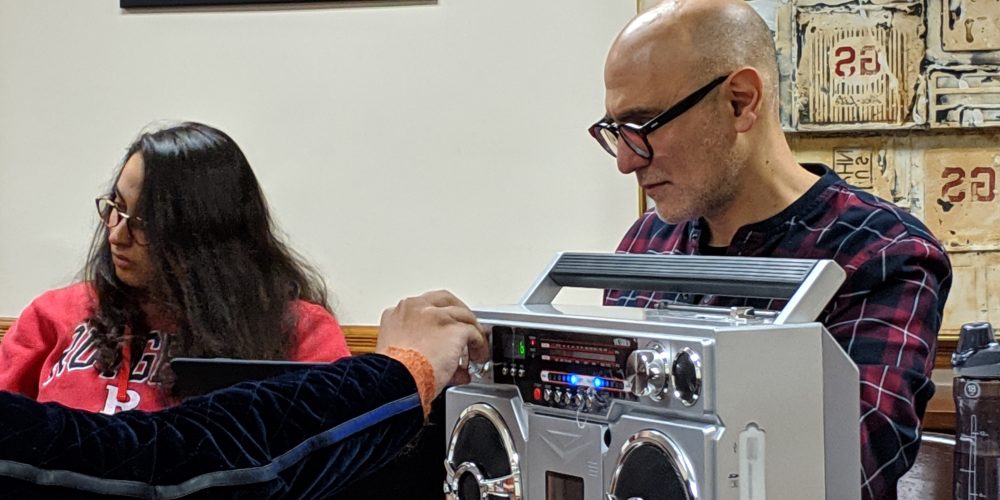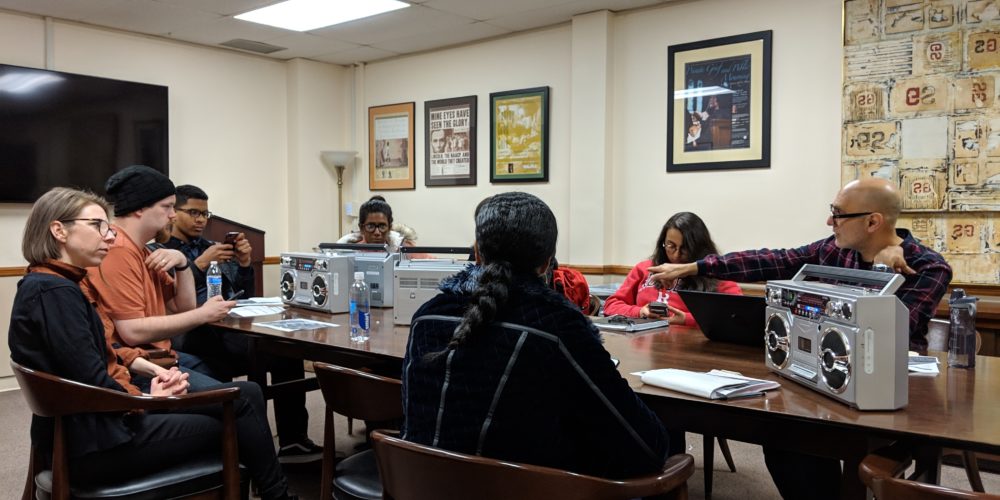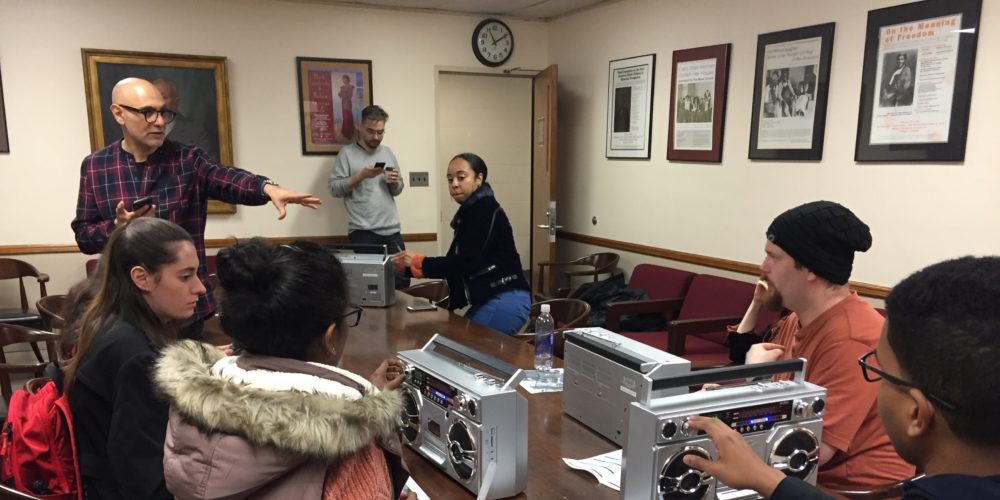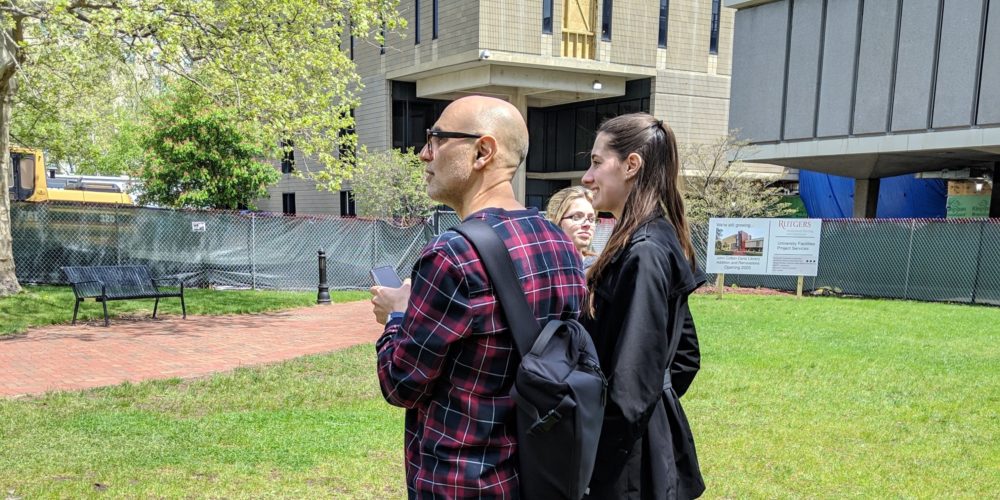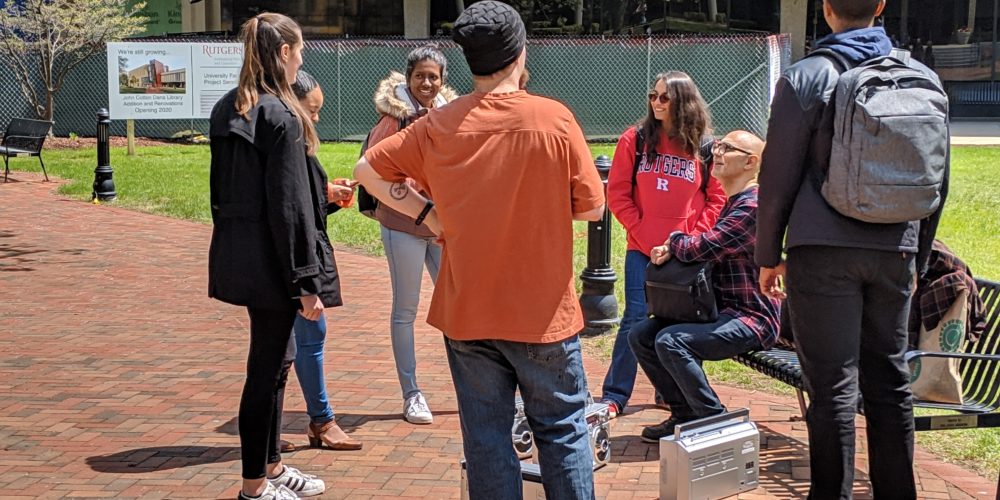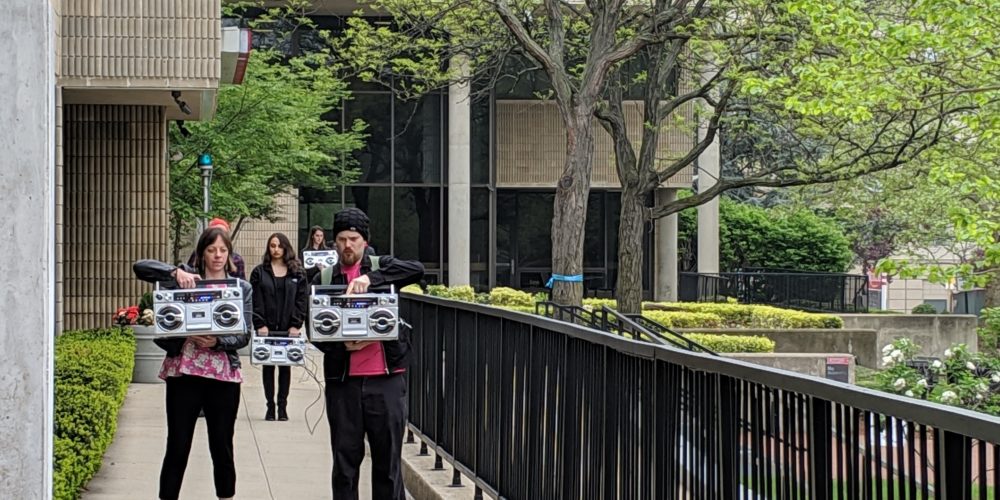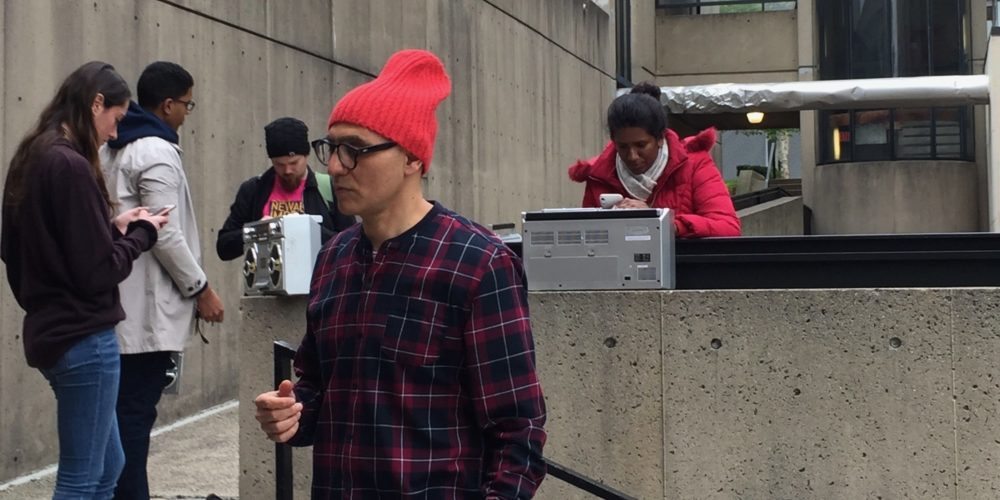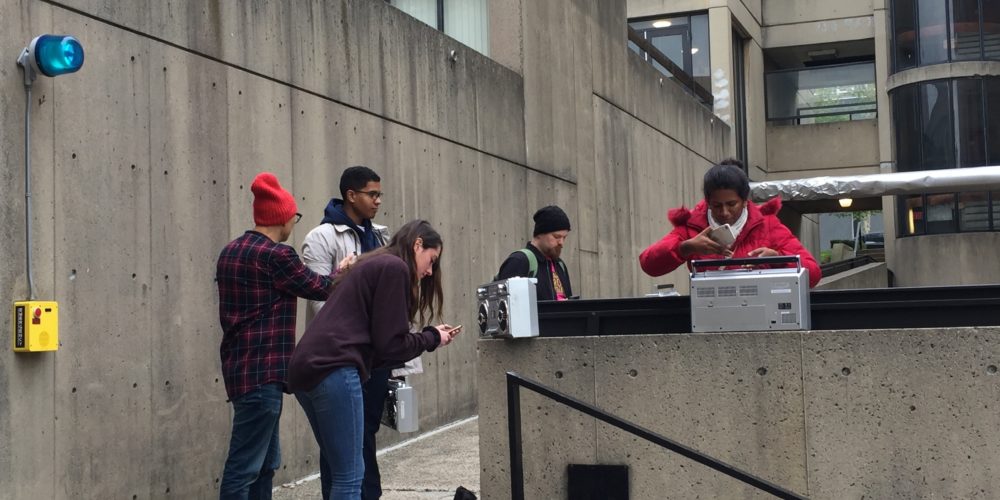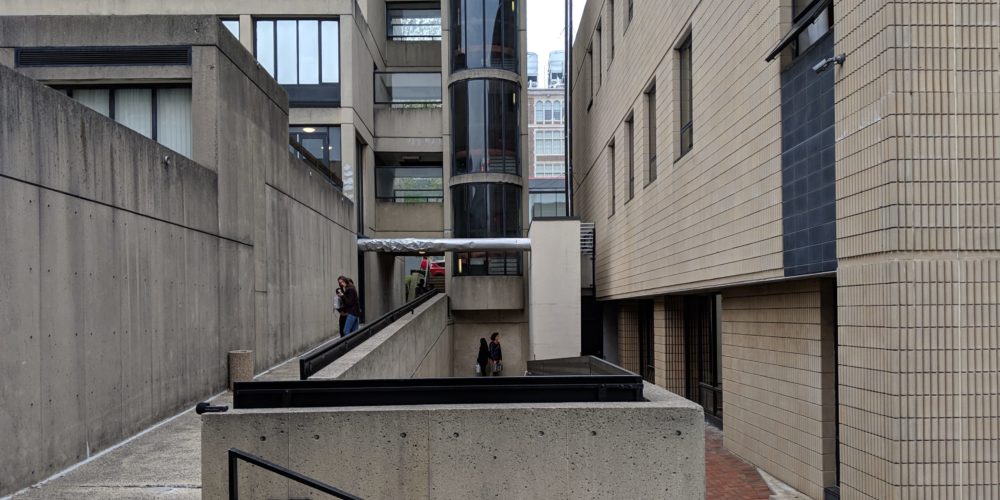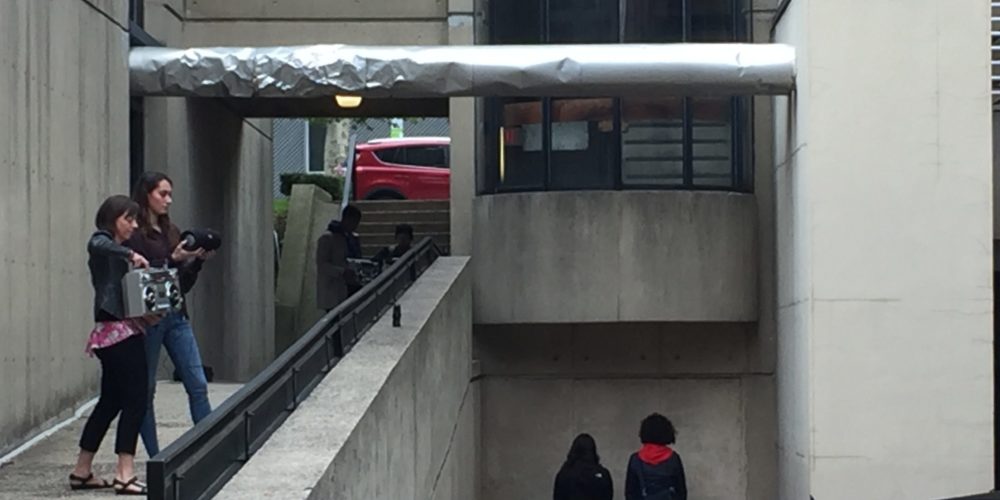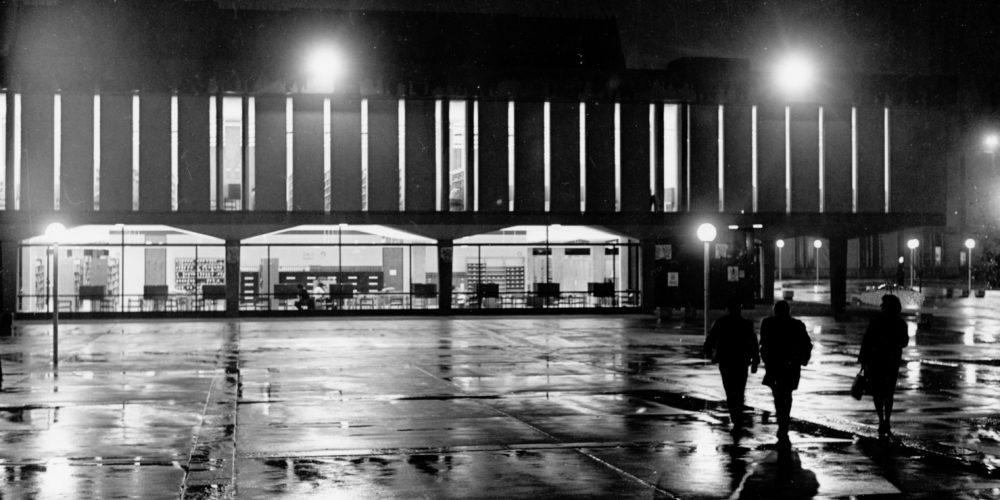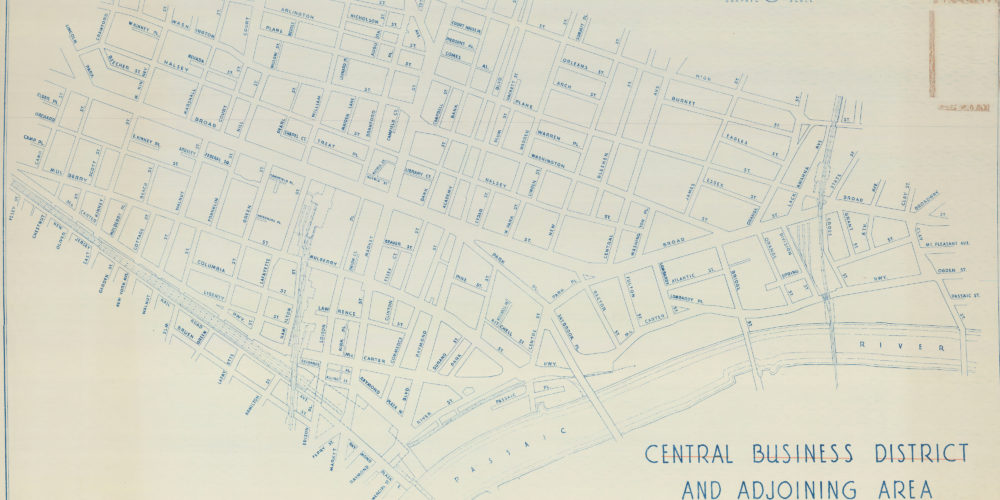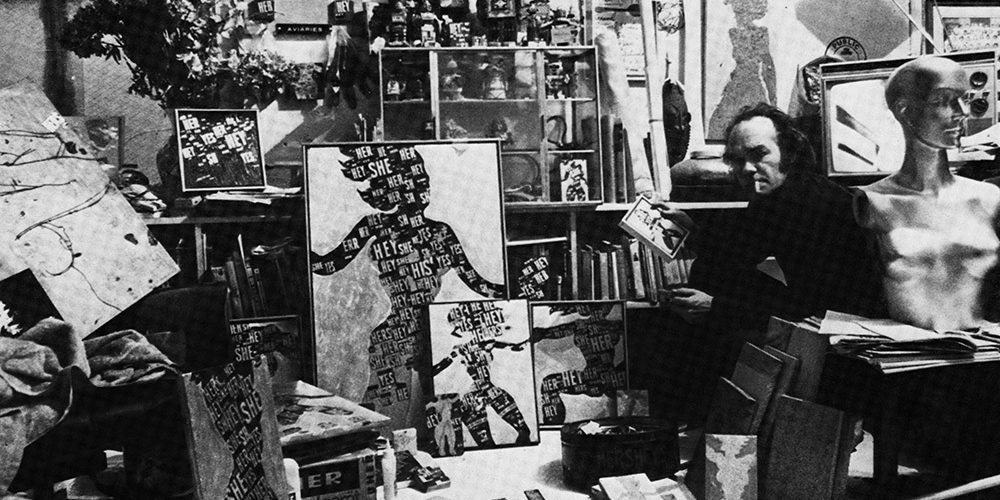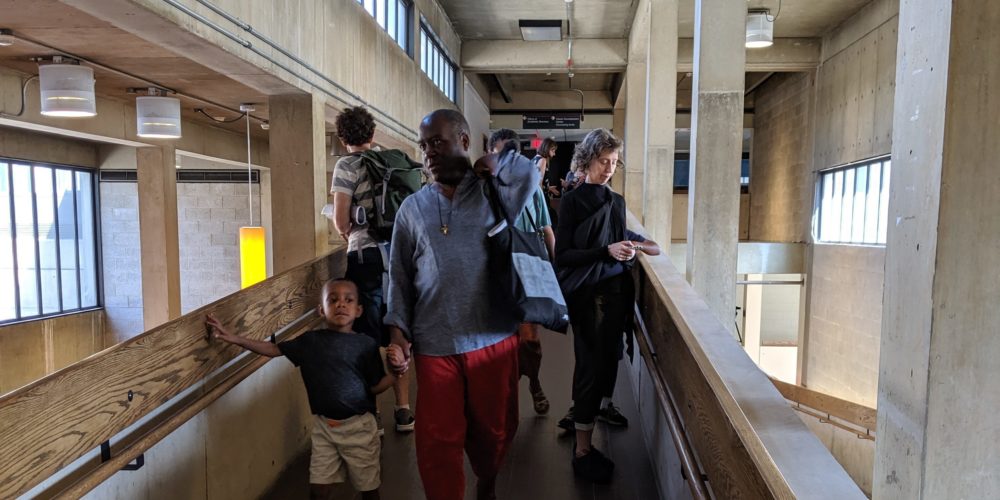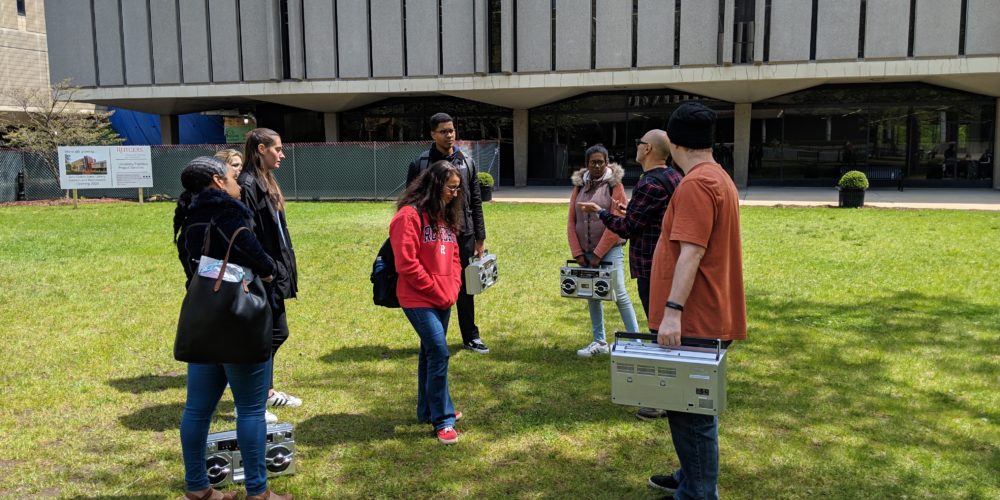
Rhythm 2 (Present) » Andrew Demirjian | Sonic CementRhythm 2 (Present)
Andrew Demirjian | Sonic Cement
SONIC CEMENT: AURAL ENVIRONMENTS, UTOPIAN VISIONS
What is the soundscape of a utopian vision?
Sonic Cement investigates relationships between sound, architecture and urban environments through a series of directed readings and collaborative engagements activating architectural space with sound.
While much has been written on the visual design of brutalist architecture, much less research has gone into the acoustic environments produced by these structures. The core Rutgers University Newark campus is a unique set of buildings built in a similar style constructed at the same time. What is the unnoticed sound environment of these buildings created with lofty aspirations of social mobility?

Sonic Cement seeks to explore this question through activating the space with a site-specific composition that is intended to move sounds across the surfaces of the buildings in the plaza creating a reciprocal conversation between sound and space. Using a variety of techniques for critical listening and sonic experimentation we will examine the tonal qualities, delay times and acoustic properties of the ricocheting sound waves across the brutalist buildings on the Rutgers University Newark Campus. During our meetings students will activate the nooks, crannies, surfaces and shapes of the buildings with custom designed sounds playing from radios and boom boxes noting the aural reception of the sound from different locations in the plaza. The acoustic space and buildings will act as an instrument and resonant surface playing an essential role to the overall sonic qualities of the completed composition. Based on our sonic research we will perform a composition in the plaza where students are participants in the final work, projecting sounds from the radios and boom boxes into surfaces of the buildings in a choreographed sequence of locations in the plaza.
The group will meet on Monday, February 18th, March 11th and April 8th for one-hour and twenty minutes. During each session we will discuss the readings, discover the sonic characteristics of the plaza between the Dana Library and the Robeson Campus Center and collaboratively prepare and refine elements of the performance. There will be one additional hour-long meeting to perform a site-specific composition in the space, documentation will be provided to each participating student. This project is an opportunity to collaborate with award winning media artist and MIT Open Doc Lab Fellow Andrew Demirjian and gain insights into methods for structuring and developing a site-specific public artwork.

To place our research and sonic explorations in context we will draw from a set of readings that examine the relationship between auditory perception and architecture, urban environments and sound fields and systems-based approaches to sound composition. In addition to looking at the architectural history of the campus and the social impact of the decision to replace parts of the Central Ward with the campus development, the seminar will examine the legacy of Fluxus at Rutgers Newark. An instrumental figure in the Fluxus movement, Al Hansen, was a professor at Rutgers Newark during the 1970’s. The participatory engagement, graphic scores and interventionist notions of the Fluxus movement inspire this project. We will also explore how these strategies can be developed for innovative applications outside of an arts context. The project is intended to provide students with a creative experience that can inform their career and personal artistic goals and heighten their attention to the often-overlooked soundscapes that shape our consciousness.

READING LIST
Required
Spaces Speak, Are You Listening?: Experiencing Aural Architecture, by Barry Blesser and Linda-Ruth Salter
- Ch. 2 Auditory Spatial Awareness
The Auditory Culture Reader, Edited By Michael Bull, Les Back
- Fran Tonkiss, Aural Postcards: Sound, Memory and the City
- Feminine Endings,by Susan McClary
- This is Not a Story My People Tell: Musical Time and Space According to Laurie Anderson
Audio Culture: Readings in Modern Music, Edited by Christoph Cox, Daniel Warner
- Francisco Lopez, 'Profound Listening and Environmental Sound Matter'
- John Zorn, 'The Game Pieces'
- Brian Eno, 'Generating and Organizing Variety in the Arts'
- Christoph Cox, 'Visual Sounds: On Graphic Scores'
- Deep Listening, Pauline Oliveros, excerpts from 'Deep Listening'
Background Noise: Perspectives on Sound Art, by Brandon LaBelle
- Ch. 4: Rhythms of Chaos: Happenings, Environments and Fluxus
Recommended
- Helga De La Motte-Haber, Space Impression Mediated by Sound
The Auditory Culture Reader
- Alain Corbin, Auditory Markers of the Village
Audio Culture
- Pauline Oliveros, 'Some Sound Observations'
Background Noise
- Ch. 6: Conceptualizations: Michael Asher and the Subject of Space
- Ch. 11: Other Architectures: Michael Brewster, Maryanne Amacher, and Bernhard Leitner
- Ch. 12 Compositing Intensities: Iannis Xenakis's Multimedia Architectures
Click and drag images to view slideshow
